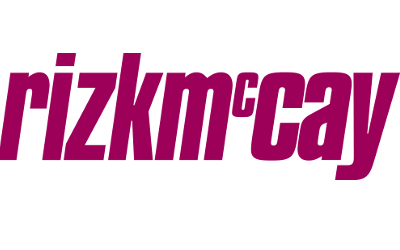As the business world becomes increasingly competitive, organisations are looking for ways to stand out and achieve success. One way to do this is by embracing diversity and inclusion in the workplace. Diversity and inclusion can bring a wealth of new perspectives, ideas, and talents to an organisation, allowing it to thrive in the marketplace.
What is Diversity and Inclusion in the Workplace?
Diversity and inclusion in the workplace are an effort to create a workplace environment that is equitable, welcoming, and inclusive of all individuals regardless of their age, gender, race, ethnicity, sexual orientation, physical abilities, religious beliefs, and other characteristics. The goal is to create an environment where everyone feels safe, respected, and valued. This includes hiring, promoting, and creating policies that are fair and equitable for all.
Benefits of Diversity in the Workplace
When organisations embrace diversity and inclusion, they reap a number of benefits. These include increased creativity, innovation, productivity, and morale. A diverse workplace also fosters an environment of collaboration and open-mindedness, which can lead to increased profits.
Studies have also shown that companies with higher levels of diversity are more likely to attract and retain top talent. This is because diverse workplaces are seen as more attractive to potential employees who are looking for an inclusive environment. Additionally, diverse workplaces have been shown to have better customer service, as employees from different backgrounds can better relate to customers from a variety of backgrounds. Finally, a diverse workplace can help to reduce discrimination, prejudice, and bias. By creating a more equitable workplace, organisations can create an environment where all employees feel respected and valued.
Developing a Diversity and Inclusion Strategy
Organisations that want to embrace diversity and inclusion in the workplace need to develop a strategy. This strategy should include a clear mission and vision, objectives, and goals. It should also include a plan for addressing any existing inequities in the workplace and developing policies and procedures to ensure equity and inclusion in the future. Finally, the strategy should include a plan for measuring progress and identifying areas for improvement. Taking all this into consideration can be time intensive and therefore, for many organisations, it’s a good idea to seek external help from EDI support specialists when addressing such strategies
Challenges to Achieving Diversity and Inclusion
While organisations can benefit greatly from embracing diversity and inclusion in the workplace, there are some challenges that need to be addressed. These include addressing existing disparities in the workplace, such as a lack of diversity in leadership positions, and addressing unconscious bias. Additionally, organisations need to be aware of the potential for tokenism, which can occur when organisations recruit a few individuals from diverse backgrounds but don’t make a real effort to create an inclusive workplace. Another challenge is creating an environment where all employees feel comfortable speaking up and voicing their opinions. This can be difficult if there is a lack of trust or respect among team members.
Recruiting Strategies for Achieving Diversity and Inclusion
Organisations can use a variety of recruiting strategies to achieve diversity and inclusion in the workplace. These strategies include expanding the recruitment pool to include more diverse candidates, creating a diverse and inclusive job posting, and using recruitment tools that are designed to attract a diverse range of candidates. Additionally, organisations should consider using diversity-focused recruitment firms or partnering with local organisations that focus on diversity and inclusion.
Creating an Inclusive Workplace
Once a diverse workforce has been hired, organisations need to make sure they are creating an inclusive workplace. This includes creating an environment where all employees feel safe, respected, and valued. It also includes providing training and education on diversity and inclusion and encouraging employees to speak up and share their ideas. Finally, organisations should make sure they are creating policies and procedures that are equitable for all employees.
Understanding Unconscious Bias
Unconscious bias is a major challenge for organisations looking to achieve diversity and inclusion in the workplace. Unconscious bias is defined as “attitudes and beliefs that people have, often without realising it, that can lead to discrimination.” Unconscious bias can be addressed by providing employees with training and education on recognising and addressing unconscious bias in the workplace. Additionally, organisations should create policies and procedures that are designed to reduce the impact of unconscious bias.
Training and Education for Improving Diversity and Inclusion
Organisations that want to create a diverse and inclusive workplace need to provide training and education on the topic. This training and education should include topics such as understanding unconscious bias, creating an equitable and inclusive workplace, and developing strategies for recruiting and retaining a diverse workforce. Additionally, organisations should provide cultural competency training to help employees better understand different cultures and backgrounds.
Measuring Progress Toward Equity, Diversity, and Inclusion
Once an organisation has implemented a strategy for achieving equity, diversity, and inclusion, it is important to measure progress. This can be done by collecting data on the number of diverse employees in a given organisation, the representation of diverse employees in leadership positions, and the number of complaints about discrimination or bias. Additionally, organisations should survey employees to get their feedback on the organisation’s diversity and inclusion efforts.
Conclusion
Organisations can benefit greatly from embracing diversity and inclusion in the workplace. By creating an equitable and inclusive environment, organisations can attract and retain top talent, increase creativity, and reduce discrimination. Additionally, organisations can create a culture of trust and respect, which can lead to increased productivity and profits. However, organisations need to be aware of the challenges that come with achieving equity, diversity, and inclusion and be prepared to address them. Finally, organisations need to measure progress and make adjustments as needed to ensure that they are achieving their goals. By doing so, organisations can unlock the potential of diversity in the workplace.








